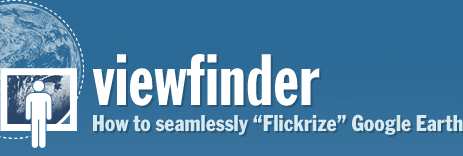Future Directions
We recognize the incredible flux occurring in 3D earth models at the moment, and indeed, these are exciting times. Viewfinder has so far been focused primarily on pose finding, and our approach to viewing posed photos has been to do our best given the constraints of current 3D world models such as Google Earth. We equally recognize the existence of the much larger issues involved in populating these worlds with 3D models. So far, our task has been to pose photos inside pre-existing models rather than actually altering the models themselves (by texturing them, for instance), or generating new models. These are much more ambitious tasks. But finding the pose of photos is an important first step toward this end.
However, we face a number of challenges, both small and large. The 2D-to-2D solution would benefit from greater integration, refinement and automation across our two applications. The 2D-to-3D solution is a greater challenge, both in terms of developing iterative programs to find “best fits” and designing an interface that encourages human helpers to develop an intuition for selecting non-coplanar points to match. For both 2D-to-2D and 2D-to-3D solutions, understanding the UI implications of side-by-side vs. overlapping views, and when to use either, requires further study.
Similarly, becoming proficient in the design language for viewing posed photos is essential. What should indicators look like? At what moment should we transition from indicators to photo? How should we adjust the speed of navigational movement? We have just begun to develop an intuitive design to explore and articulate these kinds of questions.
We wish to be symbiotic in our approach, encouraging the use of both automated methods and human help. Artificial intelligence and machine recognition are not yet fully developed, and “Web 2.0” and “crowd-sourcing” can be of enormous help. But we also hope that emphasizing human help will lead to a better understanding of how to automate some of these processes. We also want to encourage camera makers to add GPS and other sensors.
We would like to see more community participation in all aspects of 3D world mapping and modeling. There are practical reasons – primarily the sheer quantity of work that needs to be done – but perhaps there are even more important ones. As we enter a brave new world marked by the pervasiveness of cameras, our culture must address equally brave new dilemmas of representation, responsibility, and control. A geographer once said, “Maps are power. You either will map or you will be mapped.” [39] Thus, community participation is a double win.


